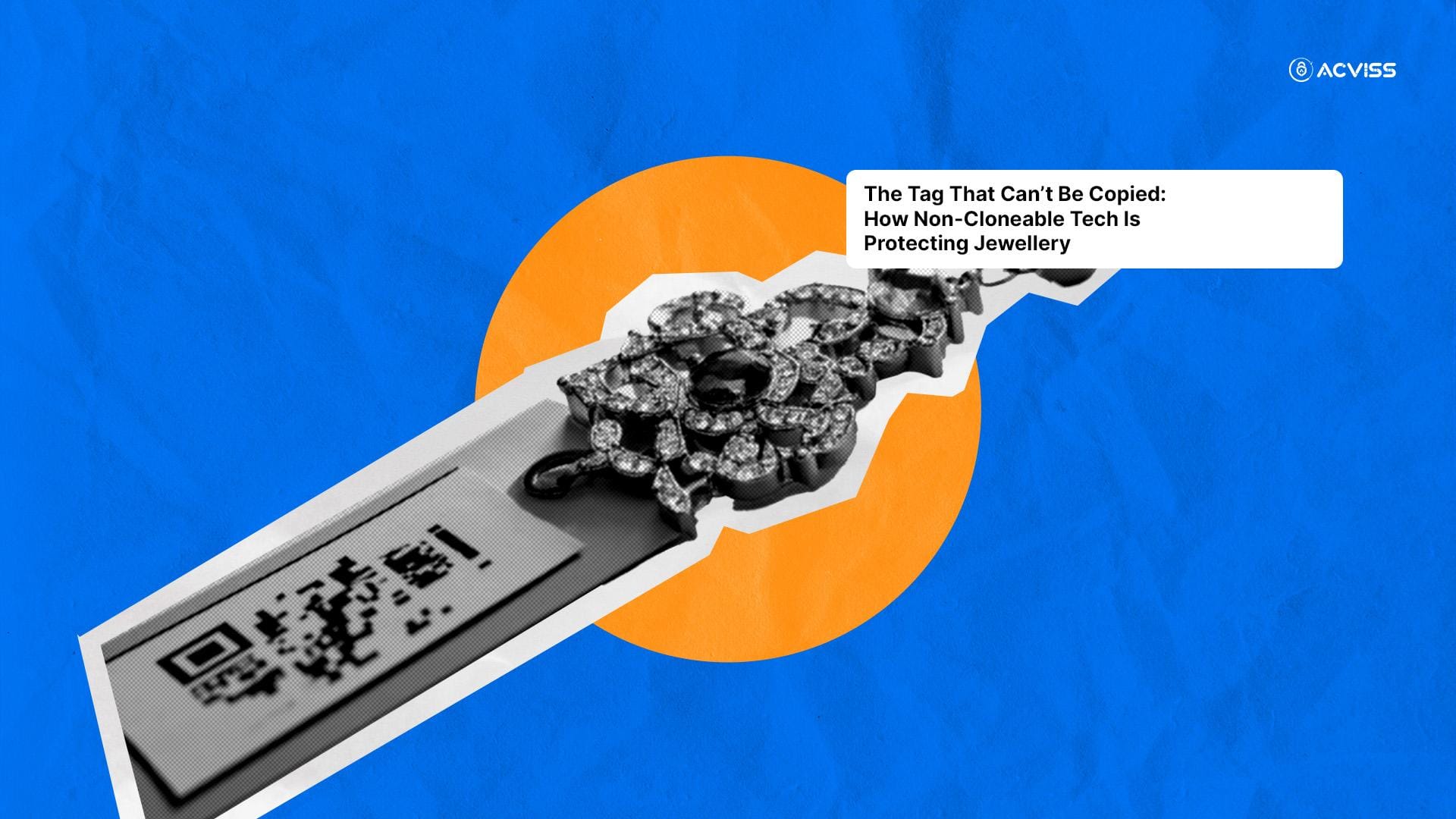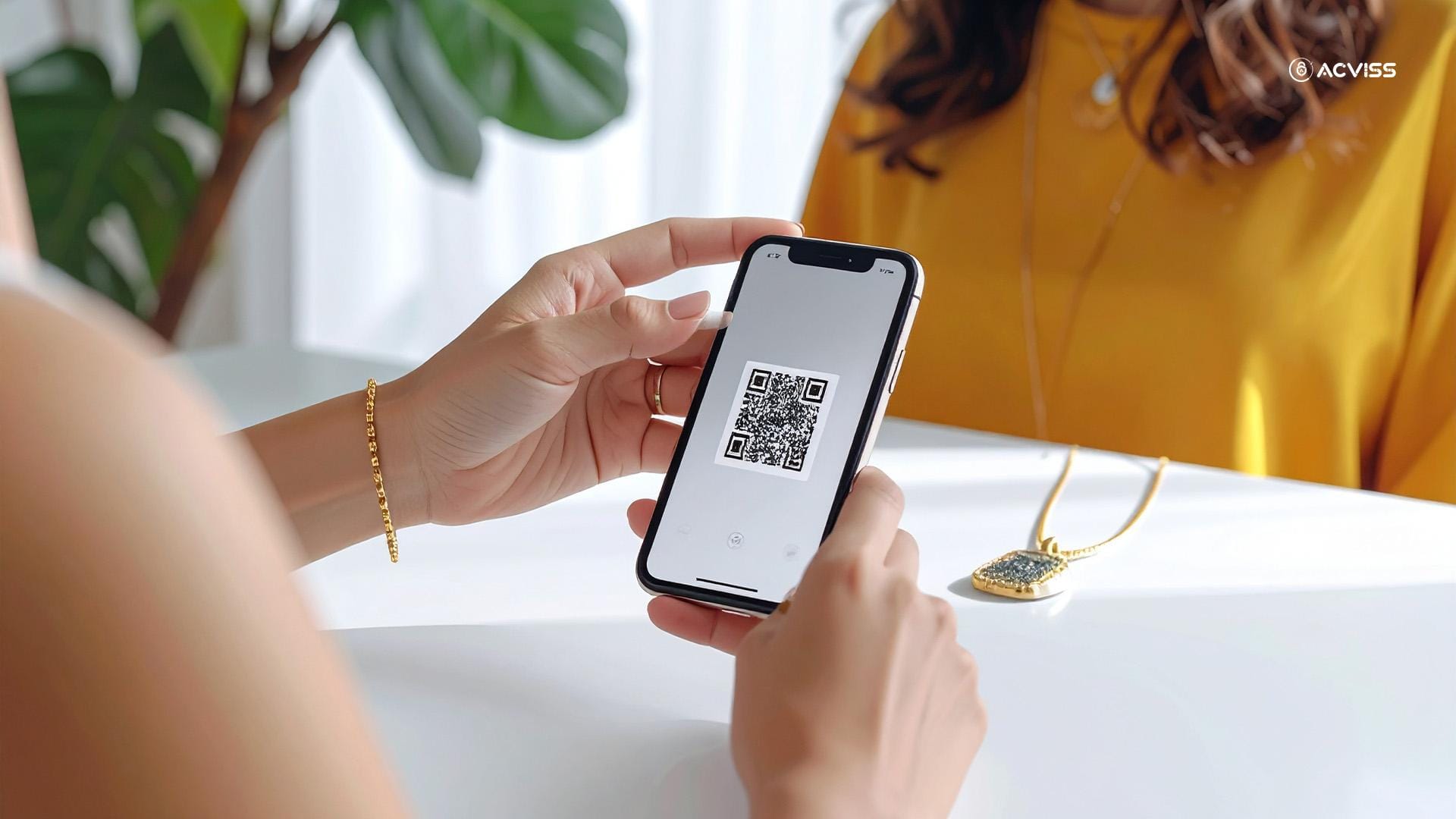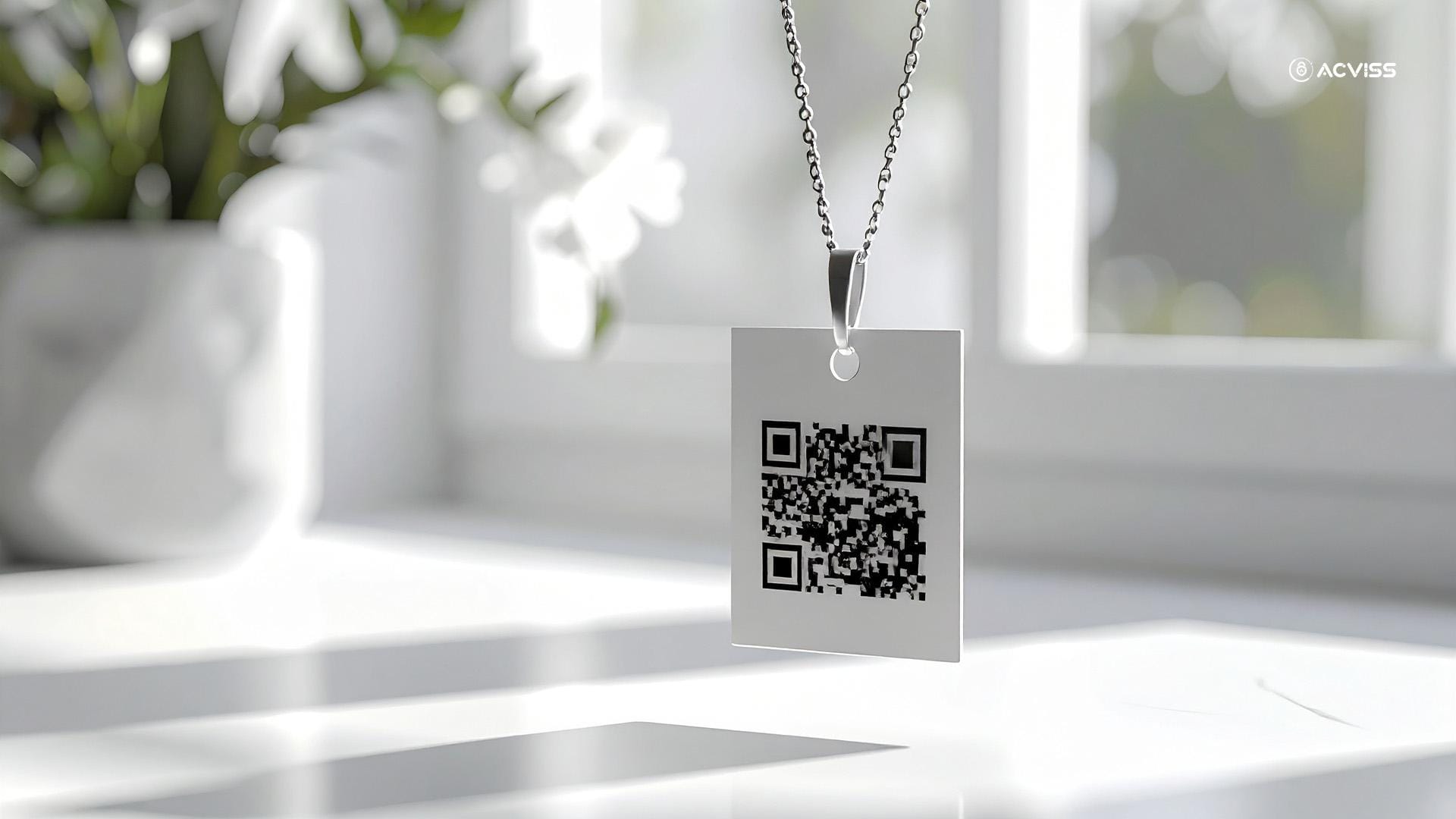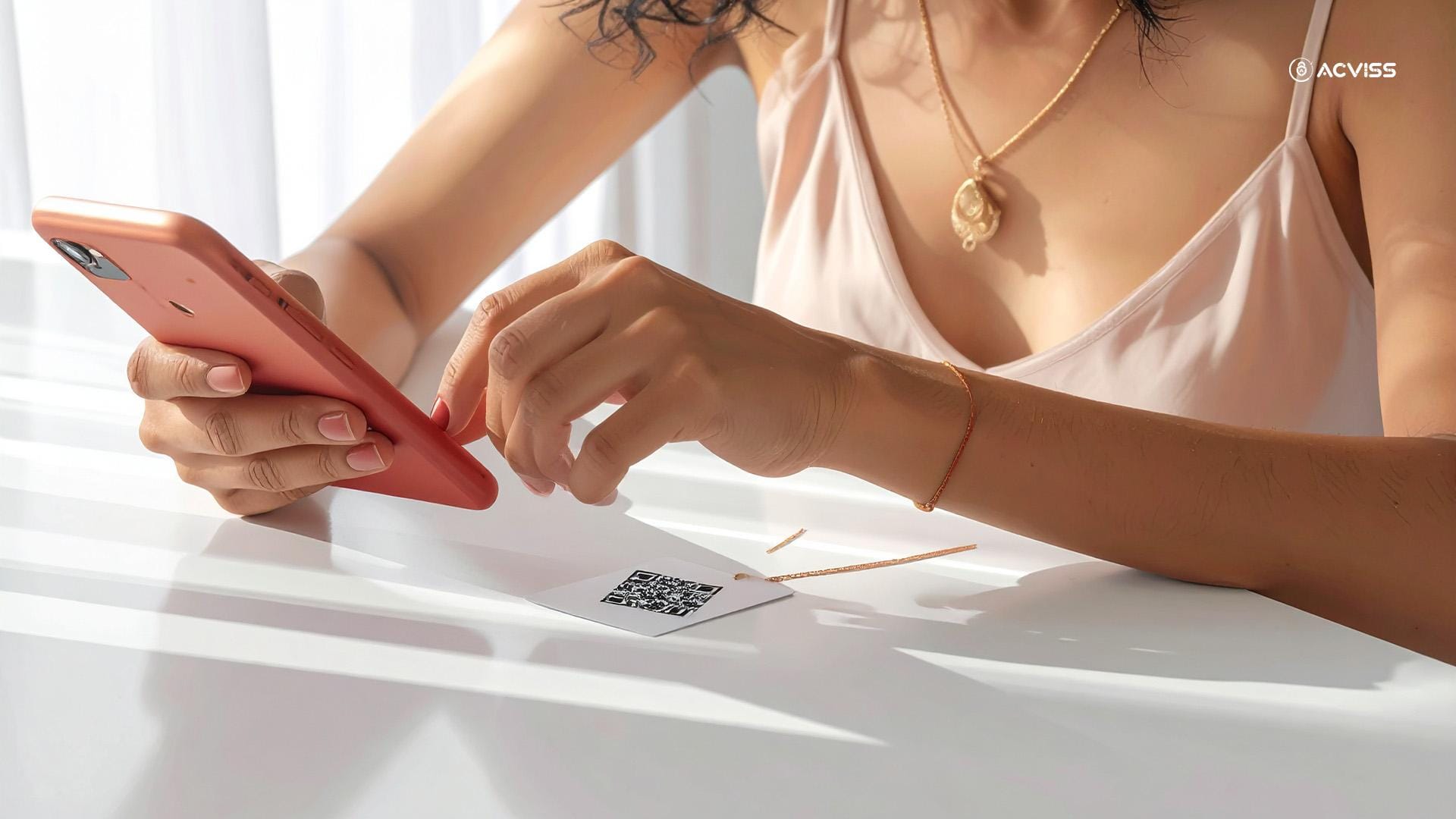The Tag That Can’t Be Copied: How Non-Cloneable Tech Is Protecting Jewellery

India’s jewellery market shines brightest during Diwali and Dhanteras, a time when gold, silver, and gemstones become symbols of prosperity. But amid the glittering displays and festive purchases, a silent menace thrives. Counterfeiters have learned to imitate not just the design, but the very essence of authenticity itself.
From fake BIS hallmarks to copied authenticity cards and forged invoices, the world of counterfeit jewellery has evolved into a billion-dollar shadow industry. These imitations deceive consumers, dilute brand reputation, and corrode the trust upon which the jewellery trade stands.
The problem isn’t always visible. It’s not in the sparkle of a gem or the sheen of a necklace. It’s in the credibility of the tag attached to it, the hallmark, the QR code, or the certificate claiming its origin. When these signs of trust can be duplicated within minutes, how can a customer truly know what’s genuine?
This is where a silent revolution is unfolding, one that merges science, technology, and trust. The emergence of non-cloneable authentication technology is transforming each jewellery tag into a digital fortress, a seal of trust that counterfeiters cannot replicate.
The Problem: Duplicates That Look Perfect
The counterfeit jewellery ecosystem is no longer run by amateurs working with crude tools. Today’s counterfeiters are technologically adept, equipped with high-resolution printers, advanced imaging devices, and software that can reproduce design elements with near perfection.
For genuine brands, this creates a dangerous illusion. The fakes don’t just look similar; they behave similarly, until examined with precision technology. The most pressing challenges include:
- Cloned QR codes that redirect to fraudulent verification sites.
- Duplicate hallmark impressions stamped on substandard alloys.
- Tampered serial numbers on warranty cards and product packaging.
- Fake “authenticity certificates” easily designed and printed online.
To an untrained eye, and even to experienced jewellers, these counterfeits often look indistinguishable from the original. Every duplicated tag doesn’t just lead to a single lost sale, it erodes brand trust, damages resale value, and shakes consumer confidence.
In an industry built on trust, where a few grams of gold can carry emotional as well as financial significance, losing credibility can be far more costly than losing inventory.
Why Traditional Tags Fail

For decades, brands have relied on QR codes, holograms, barcodes, and serial numbers to secure their products. Initially, these technologies acted as deterrents. But with the advancement of replication tools, what was once secure has now become vulnerable.
The problem lies in the static nature of traditional tags.
- Printed QR codes carry fixed data that can be copied and reused.
- Serial numbers can be forged or reprinted on fake packaging.
- Holograms, once considered impossible to duplicate, are now easily replicated using precision imaging.
- Even dynamic QR codes, once lauded for their flexibility, lose their security edge once the underlying link or data source is compromised.
In luxury segments like jewellery, where trust is the ultimate differentiator, visual security features are no longer enough. The industry needs something more profound, a fusion of physical and digital uniqueness.
It requires a tag that can’t be cloned, copied, or mimicked, not even by the most advanced counterfeiter.
The Breakthrough: Non-Cloneable Authentication
Imagine a jewellery tag that behaves like a fingerprint, unique, unrepeatable, and impossible to replicate.
Even if a counterfeiter photographs it, scans it, or digitally recreates it, the system would instantly detect the imitation.
That’s the promise of non-cloneable authentication technology, powered by Acviss Certify and its Yellow Label system.
At the core of this innovation lies an optical pattern that is completely randomised at a molecular level. Every tag contains a distinct, unrepeatable signature; even Acviss cannot recreate the same pattern twice. This physical uniqueness is paired with a digital identity, recorded on a secure, tamper-proof traceability platform.
Together, they form a digital twin for every ornament, an immutable link between the physical product and its verified digital record.
This is the new standard for product authentication and brand verification in the jewellery sector.
How It Works

1. Unique Tag Generation
Each piece of jewellery is assigned a non-cloneable tag at the time of packaging or certification.
The tag carries a secure optical signature that cannot be duplicated, not even under a microscope.
2. Digital Registration
The tag’s unique ID is registered on the Acviss Origin traceability platform, capturing details such as metal type, carat, weight, date, and source of origin. This establishes a verified product identity linked directly to its physical counterpart.
3. Instant Verification
Consumers or retailers can verify authenticity instantly using a smartphone. The scan triggers an encrypted validation process, confirming the tag’s cryptographic signature and verifying authenticity in real time.
4. Duplicate Detection
If a cloned or reused tag is scanned, the system immediately detects the discrepancy and issues an alert, ensuring both the brand and consumer are protected.
From Hallmark to Digital Trustmark
Hallmarking is a long-standing assurance of purity, but it does not always guarantee authenticity. Counterfeiters can stamp fake hallmarks onto inferior products, undermining customer trust.
The next evolution in jewellery assurance goes beyond hallmarking to combine physical non-cloneable tags with digital traceability.
By integrating Acviss Yellow Label and Acviss Origin, jewellery brands can establish transparency across the entire lifecycle, from sourcing to retail and beyond.
Each ornament becomes part of a traceable journey, with data on its origin, production, and sale. Retailers can confirm authenticity within seconds, allowing customers to validate their purchases with confidence.
This convergence of physical and digital proof transforms the humble tag into something extraordinary, a Digital Trustmark that travels with the ornament throughout its life, securing both ownership and legacy.
How Acviss Origin Complements Non-Cloneable Tech
While Yellow Label safeguards the physical authenticity, Origin ensures digital integrity and supply chain traceability. Together, they enable an ecosystem of trust that extends beyond the showroom floor.
1. Mine-to-Market Transparency
Every touchpoint, from sourcing raw materials to final retail sale, is recorded in a verifiable chain. Brands can trace every ornament’s journey, building accountability across suppliers, refiners, and distributors.
2. Immutable Records
Every scan, movement, and transfer is stored on a blockchain-secured database, ensuring that data cannot be tampered with or deleted.
3. Instant Recall and Visibility
In case of anomalies or irregularities, affected batches can be quickly identified and isolated, ensuring product safety and regulatory compliance.
4. Enhanced Customer Engagement
After verification, brands can engage customers through digital touchpoints, offering care tips, warranty registration, loyalty rewards, or resale guidance. This not only drives customer satisfaction but also builds lasting brand loyalty.
Together, these elements create a seamless blend of anti-counterfeiting solutions, traceability, and customer engagement, setting a new benchmark for brand protection and product verification in the luxury jewellery sector.
Benefits for Jewellery Brands
Challenge | Before | With Non-Cloneable Tech |
Duplicate Tags | Easily copied or reprinted | Impossible to replicate |
Fake Hallmarks | Indistinguishable from genuine | Digital verification exposes fakes instantly |
Consumer Doubt | Based on trust and paper certificates | Anchored in verifiable digital proof |
Retailer Assurance | Manual validation, prone to error | Automated authentication via scan |
Brand Reputation | Reactive protection against fakes | Proactive, integrated authenticity ecosystem |
This transformation strengthens both IP protection and trademark security, ensuring that a brand’s identity and intellectual property remain shielded from misuse.
Why It Matters More Than Ever

Jewellery is not merely an adornment; it represents heritage, emotion, and investment. When a buyer questions the authenticity of a product, it disrupts not just the sale but the very trust that sustains the entire ecosystem.
Every stakeholder, from the craftsman and retailer to hallmarking authorities, depends on authenticity as a foundation of value.
The rise of digital marketplaces has further complicated this landscape. Consumers now purchase high-value ornaments online, where visual inspection alone cannot guarantee genuineness. This is where non-cloneable technology and digital traceability become indispensable.
By merging physical verification with digital identity, brands can assure customers that their jewellery is genuine, traceable, and securely registered. In an era where trust is the new currency, product authentication becomes a competitive advantage.
Moreover, as global regulatory frameworks tighten around product traceability and consumer protection, adopting these technologies helps brands stay compliant while enhancing transparency. It reinforces the brand’s promise and builds consumer trust that translates into long-term loyalty.
The Broader Impact: Beyond Counterfeiting
The benefits of non-cloneable authentication extend far beyond stopping counterfeits. It opens new dimensions in supply chain management and track-and-trace visibility, enabling brands to gain actionable insights into product movement, inventory control, and customer behaviour.
For instance, a jeweller using Acviss Origin can:
- Trace the origin of materials to ensure ethical sourcing.
- Monitor the movement of high-value inventory in real time.
- Provide digital certificates for resale markets, ensuring continued authenticity.
- Strengthen brand recall by delivering post-purchase digital experiences.
This creates a connected, data-driven ecosystem where every product tells its own story, from creation to ownership.
The Future of Jewellery Authentication

The convergence of AI, blockchain, and non-cloneable optics is shaping the next era of brand authentication. These technologies are not only combating counterfeiting but are redefining what trust means in luxury retail.
The future will likely see integration with digital passports for jewellery, secure, tamper-proof records that track the life of an ornament, including ownership history, maintenance, and resale.
With sustainability becoming a growing concern, traceability technologies will also help verify ethical sourcing and responsible mining, further aligning brands with consumer expectations.
As the digital and physical worlds continue to merge, the boundary between brand protection and customer engagement will blur, giving rise to a seamless, transparent ecosystem built on verified trust.
Restoring Trust, One Tag at a Time
The jewellery industry has long relied on craftsmanship and legacy to build trust. Today, technology is becoming its new guardian.
With non-cloneable tags, digital traceability, and real-time product authentication, brands can finally ensure that their creations remain as genuine as the emotions they symbolise.
It’s no longer enough for a piece to be beautiful; it must be verifiably authentic.
Because in a market driven by faith and emotion, authenticity isn’t just an assurance. It’s the soul of the brand.
Interested to learn more?
Get in touch with us to discover how non-cloneable technology can transform your brand protection strategy and elevate customer trust.
FAQs
Q1: Can counterfeiters duplicate non-cloneable tags?
No. Each tag contains a physically random optical pattern that cannot be copied or predicted, even with advanced imaging.
Q2: Does it replace BIS hallmarking?
No. It complements it by adding a digital layer of proof that ensures the hallmarked item is genuine and traceable.
Q3: How does it benefit consumers?
Buyers can instantly verify authenticity and ownership through a smartphone scan, bringing transparency and peace of mind.
Q4: Can it be used for resale or warranty validation?
Yes. The same tag acts as a digital certificate, useful for future resale verification or product registration.
